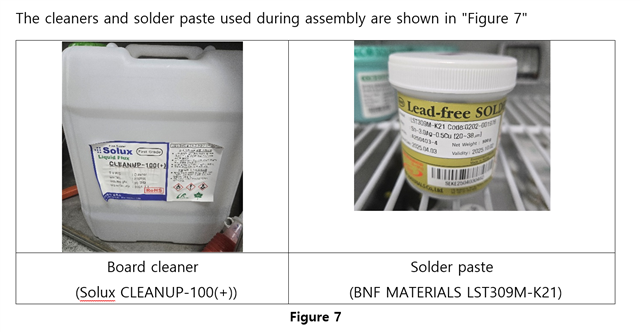Tool/software:
Hello, as a result of analyzing the relative humidity data acquired from the produced sensor, the positive error and the error outside the specification were identified, so I would like to inquire about it.
- Sensor classification
A total of 65 sensors were classified based on purchased date, and Group 3 was sub-classified based on the assembly method
|
Classification |
NIST-ID |
Number of sensors |
Assembly Method |
|
Group 1 |
xx-xx-7a-9f-09-1f |
4 |
Manual |
|
Group 2 |
xx-xx-fc-70-08-2e |
50 |
SMT |
|
Group 3-1 |
xx-xx-a5-73-11-3e |
5 |
Manual |
|
Group 3-2 |
xx-xx-a5-73-11-3e |
6 |
SMT |
Table 1
- "XX" in NIST-ID: means don't-care
- Group 3 was included to investigate the assembly method based on the results in "Table 2".
- Group 1: purchased samples for development purposes (Mauser)
- See "Figure 5" for Group 2 and Group 3
- Repeatability and Deviation check
As shown in "Table 2" below, there is a deviation from the specifications, showing an overall positive error. Notably, Group 2 shows a higher error than the other groups.
|
Category |
Error |
||
|
30%RH |
60%RH |
90 %RH |
|
|
Group 1 |
3.9 |
2.5 |
4.5 |
|
Group 2 |
2.8 |
3.7 |
8.0 |
|
Group 3-1 |
1.7 |
1.6 |
4.3 |
|
Group 3-2 |
1.1 |
0.6 |
3.3 |
Table 2
- The table was created by calculating the maximum values.
- Deviation = Acquired value of group sensor – Acquired value of reference sensor.
- Reference sensor: Vaisala, HMP155 (output type: RS-485) (certified for calibration by the Korea Meteorological Institute (KMI))
I am attaching the details and additional data, so please check and answer. Thank you.
Best Regards


